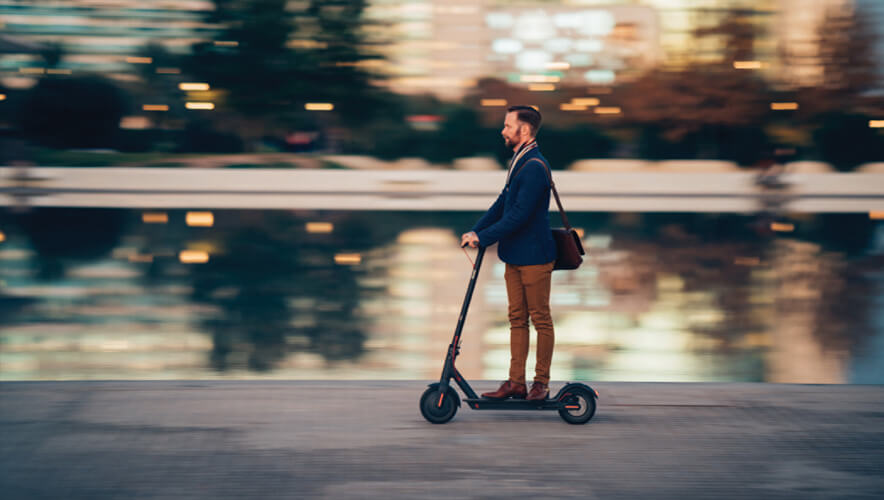Danger on Two Wheels
Whether you ride them, trip over them, or crash them, it’s hard to ignore the influx of electric scooters for share in cities around the world. Electric scooter companies, such as Lime and Bird, operate in more than 100 U.S. cities and several other countries.
In late 2018, the U.S. Centers for Disease Control and Prevention launched a study investigating e-scooter accidents to identify risk factors, the severity of injuries, and the causes of accidents. The study examined severe injuries that occurred in Austin, Texas, from September to November 2018. Preliminary results show that accidents happen during all times of the day, and most accidents were caused when the rider hit a bump in the road or lost his or her balance.
According to a CNBC report, 98 percent of patients admitted to the University of San Diego Medical Center for an e-scooter-related injury in the past year were not wearing a helmet. Forty-eight percent of riders had a blood alcohol level above the legal limit for intoxication, and 52 percent tested for an illegal substance, the report said.
San Francisco banned e-scooter sharing services for three months in 2018 because companies launched services without approval and cluttered city sidewalks with scooters. City officials authorized the return of two companies—Skip and Scoot. These two providers emphasized rider safety initiatives in their proposals; for example, Scoot will force riders to watch instructional videos before using the scooters.
College campuses are also contending with the influx of scooters, leading to new policies. The University of Texas-Austin issued a policy that said scooters “should be operated at a low speed on campus at all times… Campus has very heavy pedestrian traffic, so it is imperative to operate slowly and always yield the right-of-way to pedestrians.”
Scooters are not the only form of nonvehicular traffic accidents on the rise; according to a report from the League of American Bicyclists released earlier this year, 2016 was the deadliest year for U.S. cyclists since 1991, with 840 cycling fatalities.
Cities pursuing safer streets for cyclists and pedestrians by adding new bike lanes, bike-friendly road designs, and increased signage have not necessarily seen a positive change in the number of fatalities; Los Angeles, California, saw a 5 percent increase in cyclist and pedestrian deaths three years into its “Vision Zero” plan.
The increase in deaths rose alongside an increase in cyclists. In 2006, 623,039 Americans commuted by bicycle and 772 cyclists died. In 2016, 840 cyclists died, but 863,979 people commuted primarily by bike—a 6.4 percent increase.
